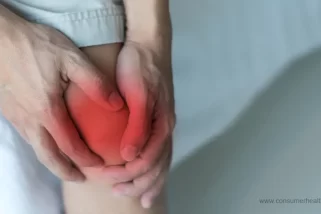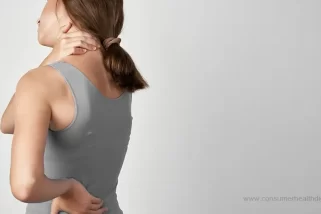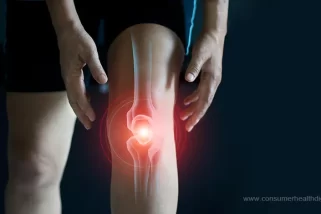Back pain, often considered a modern-day affliction, stems from a variety of causes including poor posture, sedentary lifestyle, muscle strain, or underlying medical conditions such as degenerative disc disease or arthritis. Symptoms can vary widely but typically include persistent aches, localized sharp pains, or stiffness along the spine, which may worsen with movement or prolonged periods of sitting or standing.

According to research, effective treatment for back pain relies on a comprehensive approach that may involve pain management strategies, physical therapy, lifestyle modifications, and, in some cases, surgical intervention. It’s crucial to consult healthcare professionals who can tailor a treatment plan based on the individual’s specific conditions and needs. Promptly addressing back pain not only alleviates immediate discomfort but also prevents long-term complications[1].
Causes of Back Pain: A Web of Culprits
Back pain can arise from various sources, often interlinked. Here are some frequent offenders:
- Muscular Strains and Ligament Sprains: Our backs are intricate structures relying on muscles, ligaments, and tendons for support and movement. Overuse, improper lifting techniques, or sudden movements can strain or sprain these soft tissues, leading to pain[2]. Imagine lifting a heavy box with a rounded back – no wonder your muscles protest!
- Disc Degeneration and Herniation: The spine is a marvel of engineering, with discs acting as cushions between the vertebrae. Over time, these discs can wear and tear (degeneration), losing their height and flexibility. In some cases, the soft inner part of the disc (nucleus pulposus) can bulge or rupture (herniation), pressing on nerves and causing pain, numbness, or weakness, particularly in the legs (sciatica).
- Postural Misalignment: Our posture significantly impacts back health. Slouching, hunching, or standing for extended periods can put excessive strain on muscles and ligaments, leading to pain and discomfort[3]. Think of carrying a heavy backpack on one shoulder all day – your back will surely feel the strain!
- Osteoarthritis and Other Arthritis Forms: Arthritis, a condition characterized by inflammation and degeneration of joints, can affect the spine as well. Osteoarthritis, the wear-and-tear type of arthritis, is a common culprit for back pain, particularly in older adults. Other forms of arthritis, like rheumatoid arthritis, can also affect the spine and contribute to back pain[4].
- Skeletal Irregularities and Scoliosis: In some cases, back pain can stem from underlying skeletal abnormalities. Scoliosis, a condition where the spine curves abnormally, can cause pain and discomfort. Other skeletal irregularities like spondylolisthesis, where a vertebra slips out of place, can also contribute to back pain[5].
Symptoms of Back Pain: Listen to Your Body’s Signals

Symptoms of Back Pain
According to the National Institute of Arthritis Back pain often announces its presence loud and clear[6]. Here are some telltale signs to watch out for:
- Localized Pain and Discomfort: Back pain can manifest anywhere along the spine, from the upper back between the shoulder blades to the lower back. The pain can be a dull ache, a sharp, stabbing sensation, or a burning feeling.
- Radiating Pain Down the Legs: Sometimes, the pain can radiate down one or both legs, a characteristic symptom of sciatica caused by a pinched nerve in the lower back. This pain can be sharp and shooting, often accompanied by numbness or weakness.
- Stiffness and Reduced Flexibility: Back pain can make it difficult to move freely. You might experience stiffness, particularly in the morning, or a reduced range of motion when bending, twisting, or reaching.
- Muscle Spasms and Tenderness: Muscle spasms, involuntary contractions, can occur in response to back pain, causing intense pain and tightness in the affected muscles. The affected area might also be tender to touch.
- Signs When to Seek Medical Attention: While some back pain resolves on its own, certain symptoms warrant a visit to a healthcare professional. These include persistent pain lasting longer than a few weeks, pain that worsens with activity, radiating pain down the legs accompanied by numbness or weakness, fever, unexplained weight loss, or difficulty controlling bowel or bladder function.
Relief and Treatment Options: A Multi-Pronged Approach

Relief from Back Pain
Back pain doesn’t have to be a life sentence. Here are some strategies to manage your pain and get back to feeling your best:
A. Home Remedies and Lifestyle Modifications:
Often, the power to ease back pain lies within your reach. These self-care strategies can provide significant relief and promote healing:
B. Medical Treatments:
If self-care measures aren’t enough, seeking professional help is essential. Here are some medical treatment
options:
C. Alternative Therapies:
Some people find relief through complementary therapies alongside conventional medicine. Here are a few options to consider, but discuss them with your doctor first to ensure they are safe and appropriate for you:
Conclusion
In conclusion, back pain stands as a prevalent challenge with far-reaching implications on the quality of life. It emerges from an intricate tapestry of causes ranging from muscular strains to serious underlying conditions like arthritis or disc degeneration. Recognizing the symptoms early is pivotal in managing back discomfort and mitigating its impact.
Adopting proactive measures such as lifestyle modifications, engaging in prescribed physical therapy, and exploring medical treatments can vastly improve one’s condition. Ultimately, understanding that back pain is not a monolith and seeking professional guidance for a tailored treatment plan underscores the pathway to relief and recovery. Remember, while back pain might be common, enduring it shouldn’t be a norm. Through informed actions and expert advice, individuals can reclaim their comfort and lead a life less burdened by pain.
9 Sources
We review published medical research in respected scientific journals to arrive at our conclusions about a product or health topic. This ensures the highest standard of scientific accuracy.
[2] Ankle Sprain Versus Muscle Strain Injury in Professional Men’s Basketball: A 9-Year Prospective Follow-up Study : https://www.ncbi.nlm.nih.gov/pmc/articles/PMC6589969/
[3] Non-structural misalignments of body posture in the sagittal plane : https://www.ncbi.nlm.nih.gov/pmc/articles/PMC5836359/
[4] Arthritis : https://www.ncbi.nlm.nih.gov/books/NBK518992/
[5] Scoliosis Associated with Lumbar Spondylolisthesis: Spontaneous Resolution and Seven-Year Follow-Up : https://www.ncbi.nlm.nih.gov/pmc/articles/PMC7006605/
[6] Back Pain : https://www.niams.nih.gov/health-topics/back-pain
[7] Physical activity and exercise for chronic pain in adults: an overview of Cochrane Reviews : https://www.ncbi.nlm.nih.gov/pmc/articles/PMC5461882/
[8] Systemic Anti-inflammatory Corticosteroid Reduces Mechanical Pain Behavior, Sympathetic Sprouting, and Elevation of Pro-inflammatory Cytokines in a Rat Model of Neuropathic Pain : https://www.ncbi.nlm.nih.gov/pmc/articles/PMC2174791/
[9] Chiropractic : https://en.wikipedia.org/wiki/Chiropractic








 This article changed my life!
This article changed my life! This article was informative.
This article was informative. I have a medical question.
I have a medical question.
 This article contains incorrect information.
This article contains incorrect information. This article doesn’t have the information I’m looking for.
This article doesn’t have the information I’m looking for.